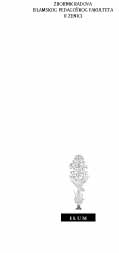ZNAKOVNA NARAV ISLAMSKE UMJETNOSTI
SEMIOTIC NATURE OF ISLAMIC ART
Author(s): Nusret IsanovićSubject(s): Education
Published by: Islamski pedagoški fakultet Univerziteta u Zenici
Summary/Abstract: An art like Islamic, that emerges from the feelings of listening attentively to the persuasions of God’s signs all around present, from the ambiance of reading them, competent understanding and following, can be nothing but a sign. Like natural phenomena, which also are God’s ¨signs¨ or ¨symbols¨ in the world of images, the works of Islamic art do not aim for either absorbing all attention of a man or its permanent fixing onto itself. On the contrary, they direct his attention and pass it on to Something Behind, that in the end all sign phenomena direct to. Since they are a part of earthy and sky-semiotic universe, a part of sign order ¨in wide space expanses and in human souls¨ , the works of Islamic art are harbingers, conveyors and witnesses of Eternal God’s Beauty, Sublimity and Goodness. Signs in Islamic art appear as reflection of Muslim artist’s spirit whose enlightened soul constantly searches for inspiration at the wells of God’s wisdom. Hence it is a special way of intuitive reading and deciphering their meaning; it is one of the most peculiar verticals of Islamic spirit or rising voyage of a Muslim’s soul to God. Semiotic nature of Islamic art is directly defined by the credo: there is no divinity except God, and a principled view deduced from it that says that anything that could become an ¨idol¨ must not be put between a man and the invisible presence of God. As such it is considered one of the most efficient semiotic and symbolic powers in the world of Islamic culture.
Journal: Zbornik radova Islamskog pedagoškog fakulteta u Zenici
- Issue Year: 2007
- Issue No: 05
- Page Range: 115-126
- Page Count: 12
- Language: Bosnian

